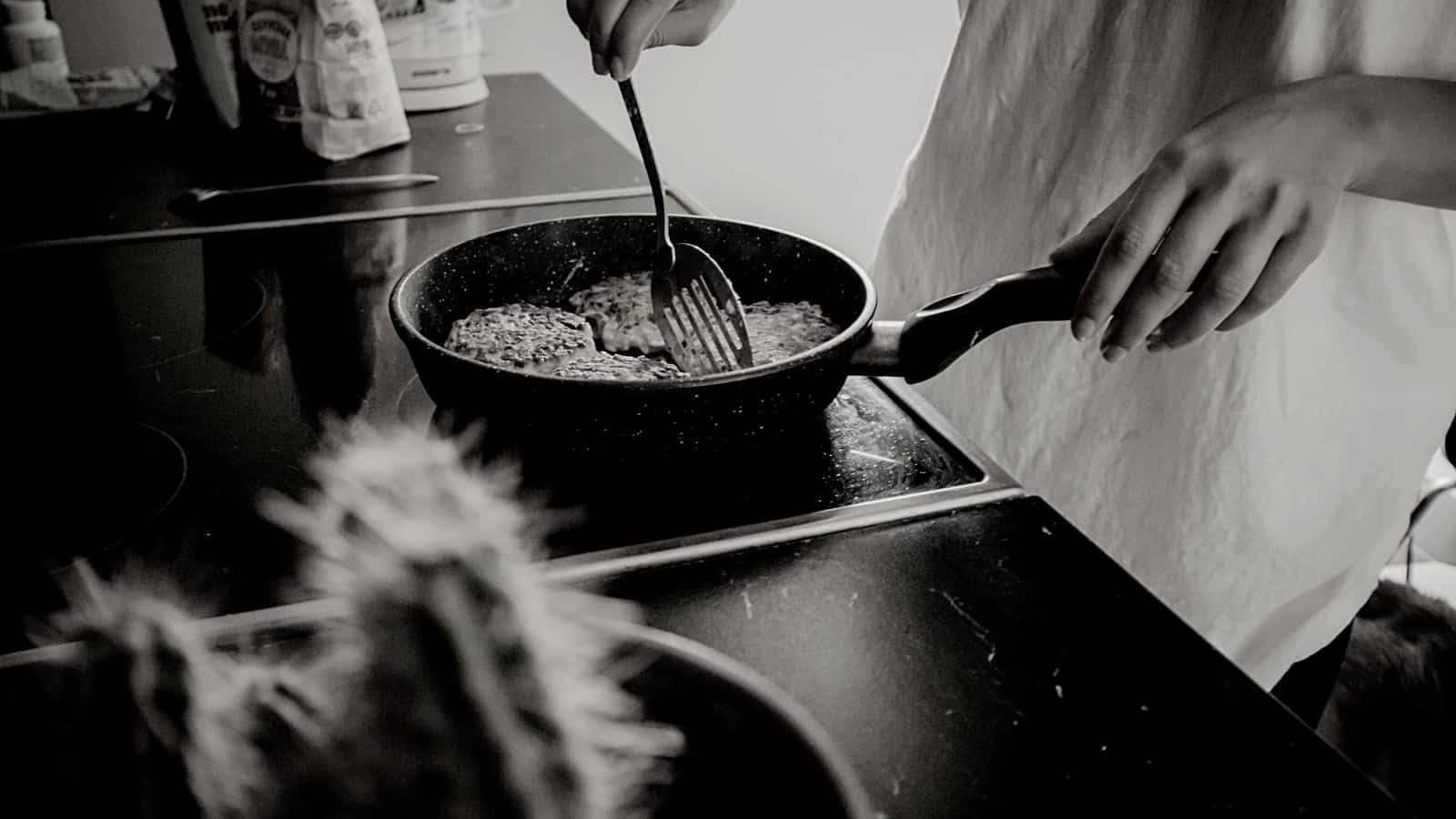Did you know that one in six Americans will contract food poisoning each year? The Center for Disease Control states that 128,000 people are hospitalized each year for this sickness. Sadly, in some cases, food poisoning can become so severe that it can cause death.
Using last night’s dinner for tomorrow’s lunch is financially wise. Do you realize that there are 40 million tons of food wasted each year in this country? The numbers are staggering, considering that many countries have people thankful to get one meal a day.
You want to repurpose your leftover meals and use them for something else. While this is a good idea, you must be safe to prevent contamination with salmonella or other foodborne bacteria.
Here are ten tips for reheating and storing your leftover foods so that you don’t get sick.
1. Don’t Keep Leftovers More Than Three Days
Benjamin Franklin made an astounding comment when he said that fish and company both stink after three days. However, it’s not just fish that you should be concerned with as all foods harbor bacteria. The problem is that when foods get above 40 degrees is it allows the toxins to grow.
So, if your kids open the fridge and get that box of pizza out three times, each time it’s giving them a higher risk of them developing food poisoning. Don’t keep reheating your foods, and throw out all leftovers when they hit the three-day mark.
2. Never Let Food Sit Out for More Than Two Hours
Your refrigerator stops the growth of germs because of the cold temperature, but once you sit it out on the counter for a couple of hours, then it’s a whole different ballgame.
The temperature inside your home is probably around 70 degrees. If that food sits out on the counter for a few hours, then it’s going to be unsafe to eat. If you live in an area where the temperature is warmer, then you should only let it sit out for an hour.
Remember, bacteria won’t always change the taste or appearance of your foods.
3. Reheat Until the Internal Temperature is 165 Degrees
You have many choices for reheating food. However, the key is to make sure that the internal temperature reaches 165 degrees. It would help if you used a meat thermometer to check the center to ensure the proper temperature.
If you don’t reheat it properly, then you increase your risk of getting sick. Don’t take a chance because food poisoning is a nasty condition that you don’t ever want to experience.
4. Make Sure All Leftovers Are Wrapped Securely
Have you ever made a bowl of tuna salad and just sat it inside the refrigerator without a lid? In only a few hours, everything in your fridge would smell and taste like tuna. You must put a lid and seal your leftovers tightly.
A lid prevents other flavors from blending as well as keeping germs from entering or exiting this dish.
5. You Can Freeze Leftovers for 3-4 Months
Are you one of the people who think you can toss something in the freezer and forget about it? Believe it or not, food in the freezer also has an expiration date. You should mark each item with the date you freeze it so that you know when to use it by or pitch it.
As a rule of thumb, you should use or toss foods after 3-4 months, specifically ones that have been previously cooked. There are other guidelines for fresh meat, and some can be frozen up to a year or more. However, when it comes to leftover foods, stick with four months tops.
6. Never Reheat Leftovers More Than Once
Each time you reheat that vegetable soup or other entrée, you are taking away from the dish’s vitality. It’s better to portion out the amount you want and save the rest for later. Each time you reheat and cool a food item, you are increasing the risk of multiplying the germs and your chance of getting poisoning.
It gets tricky if you’re pregnant or have a compromised immune system. In these instances, you should never eat leftover foods at all. You want to protect yourself as best as possible, and you can only do this by being extra careful with day-old items.
7. Use the Oven to Reheat When Possible
Some people love using a microwave because it’s a quick and easy way to reheat food. However, many foods lose their integrity in this device. For instance, pizza reheated in the microwave doesn’t taste anywhere near as good as it does in the oven.
Additionally, the oven heats more thoroughly, which can be a big issue when you’re talking about food poisoning. Things like rice need to be a consistent temperature of at least 165 degrees to keep germs like bacillus cereus at bay.
The bacillus cereus toxin can linger in temperatures above 168 degrees, which is why it’s so important to make sure you have a consistent temperature throughout your foods. When in doubt, use your oven to do any reheating.
8. Never Refreeze Leftovers That Have Been Thawed
Let’s assume you take a package of chicken out of the freezer and boil it. Then, you shred it into small packages to put in the freezer for a quick meal. Now, once you take one of those packages out to cook for dinner, never put it back in the freezer.
Once the meat has been thawed and used once, it can’t be refrozen. Why is this such a problem? As you thaw meet, the toxins and germs start to grow. When you put it in the freezer, it stops the growth but cannot eliminate what’s already there.
Then, during the second thawing, it introduces even more bacterium to the food. It’s just never a good idea to refreeze anything twice.
9. Serve Reheated Foods Immediately
You must always serve foods that you have reheated immediately. We’ve already discussed that toxins start to grow once food reaches 40 degrees, so the longer you leave it to sit out, the greater the risk of germs.
Once you’ve reheated a dish, make sure you serve it within 5-10 minutes. Please don’t allow it to sit out in a room temperature home and allow germs to grow. It’s often the little things when it comes to leftovers that have the most significant impact.
10. Know When It Needs to Go
The best way to tell if you’re in danger of getting poisoning is to use your senses. First, examine the foods and look for signs of mold, discoloration, or any other signs that it just doesn’t look right. Second, the smell is a strong sense that can help protect you when it comes to eating tainted food.
Have you ever smelled chicken or hamburger that started to spoil? There will be something about it that smells funny or odd. Always give a quick sniff to any leftover foods. If it doesn’t smell or look right, then don’t eat it.
Check Your Refrigerator Temperature
Do you know what your refrigerator’s temperature is set at? The average American household is set at 50 degrees, but it should be no more than 40-45 degrees. While it may use a little more electricity, setting it down to 35-38 degrees is even better.
Plus, it will ensure your water and other beverages are super cold. If your refrigerator is not at the right temperature, then you are just asking for trouble.
Keeping Leftovers Safe as Possible
Leftover foods are tasty and handy, so you need to make sure you do whatever you can to ensure that they are safe to eat. It’s a widespread belief that you should let foods completely cool before you put it in the refrigerator, but nothing could be further from the truth.
It’s better to allow foods to cool completely inside the refrigerator, a controlled environment that keeps toxins at bay. If you allow food to come to room temperature, then you’re increasing the chance that your food will become tainted and could be deadly if you eat it.
It won’t hurt your refrigerator if you let a warm dish sit inside it, nor will it ruin the food itself. If you have leftovers that you bring home from a restaurant, you can store them in their original container. If the item is covered, you’re in no real danger of picking up germs in these containers.
The Dangers of Cross-Contamination
One of the most significant issues that people encounter is cross-contamination. When you pack your leftover foods, make sure you don’t use spoons or spatulas that have touched raw meats. Chicken carries an extremely high risk of salmonella when not handled properly.
If you’re using a fork or other utensil that touched the raw chicken, then it can make your food tainted. It won’t look or smell any different, but you can get sick shortly after eating it. The last thing you want to do is reintroduce bacteria to already-cooked food.
 Final Thoughts on Eating Leftovers Safely
Final Thoughts on Eating Leftovers Safely
You can reuse your foods and repurpose them for other meals. However, you must use safety to ensure that you reduce the risk of developing food poisoning. Once you’ve had it, you will agree it’s one of the worst experiences of your life, and you will do anything to prevent another encounter.


















